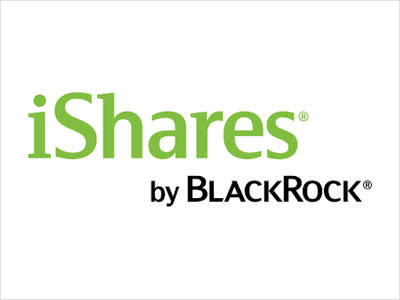BlackRock has been managing index portfolios since 1971
An ETC can be an easier way to invest in gold without holding physical bars
The ETC’s low charges help it track the price of gold
How it fits in a portfolio
An ETC is a type of exchange traded product that offers a way to track the performance of a commodity, commodity index or currency. This includes markets like oil, precious metals, natural gas, and livestock. They also trade on stock exchanges, like shares. This means their price fluctuates throughout the day.
The iShares Physical Gold ETC provides exposure to the spot price of gold, which is the current price in the marketplace at which the commodity can be bought or sold.
An exchange traded product is one of the simplest ways to invest and can be a low-cost way to add exposure to gold to an investment portfolio. ETCs that track gold could help diversify a portfolio focused on other assets, such as shares and bonds.
We think investments in a specific commodity like gold should usually only form a small part of a well-diversified investment portfolio.
Manager
There are no portfolio managers responsible for this ETC like you would expect to find in a traditional equity or fixed income fund as each unit is issued as a debt note that represents the price of gold and there is therefore nothing to manage on an ongoing basis.
While there are no portfolio managers, Blackrock have a Risk Quantitative Analysis Group which oversees and assesses the performance of all their funds including this gold ETC. They ensure that the ETC continues to use the gold price which is determined by the London Bullion Market Association (LBMA). The LBMA is an international trade association, representing the global market for gold and silver bullion.
Process
This ETC aims to provide exposure to physical gold and therefore represents real gold bars held in a vault. JPMorgan act as the custodian for the gold bars, ensuring it is kept in a highly secure vault in London on behalf of ETC investors. In the unlikely event that the custodian was to default, iShares Physical Metal plc is entitled to arrange the removal of the bars in the account and make alternative vaulting arrangements for the continued protection of clients.
Each ETC security has a metal entitlement which is the amount of physical gold backing it. iShares carry out daily reconciliation of the number of bars required for the ETC. The list of the metal bars in the vault is published daily on iShares.com.
The gold backing the ETC is held in a secured and allocated vault. ETC units will only be issued when the physical metal is transferred to the allocated vault. This ensures that the ETC units are always physically backed by allocated metal. When the number of ETC units to be created does not match a whole number of gold bars, one extra bar is transferred to the allocated account to protect investors and avoid metal in unallocated form.
As this ETC is listed offshore investors are not usually entitled to compensation from the UK Financial Services Compensation Scheme.
Culture
BlackRock is currently the largest asset manager in the world, running around $11.6trn of assets globally as of December 2024. The company was founded by eight partners including current CEO Larry Fink and is known for both active and passive strategies. Employees at BlackRock are encouraged to hold shares in the company so that they are engaged with helping the company perform well and grow. The iShares brand represents BlackRock's family of index tracking and exchange-traded funds.
As the world's largest asset manager, and with lots of resource and knowledge under its belt, BlackRock benefits from unique access to the marketplace, which can help reduce trading costs. BlackRock is also a pioneer in the passive investment space and has a track record of innovation in this part of the investment market.
ESG Integration
BlackRock was an early signatory to the PRI and has offered ESG-focused funds for several years, including through its iShares range of passive products. However, it only made a company-wide commitment to ESG in January 2020. Following that announcement, the company promised to expand its range of ESG-focused ETFs, screen some thermal coal companies from its actively managed funds and require all fund managers to consider ESG risks.
BlackRock’s Investment Stewardship Team aims to vote at 100% of meetings where it has the authority to do so. The Investment Stewardship team engages with companies, in conjunction with fund managers, and the results of proxy votes can be found on the BlackRock website’s ‘proxy voting search’ function.
BlackRock has courted controversy in recent years for failing to put its significant weight behind shareholder resolutions aimed at tackling climate change. It responded by committing to be more transparent on its voting activity and providing rationales for key votes.
BlackRock raised further concerns in 2022 when it indicated it might support fewer shareholder proposals based on environmental and social issues in the future. However, its support for shareholder resolutions has fallen dramatically, from 40% in 2021 to just 4% in 2024. BlackRock argues that many of the resolutions were overreaching, lacked economic merit or didn’t promote long-term shareholder value, but this reasoning has been met with some scepticism.
All gold bars included in the ETC meet the LBMA responsible gold criteria – a set of criteria that ensure gold bars are responsibly sourced and contain a certain purity while bearing the stamp of a LBMA approved refiner.
Cost
The ETC currently has an ongoing annual charge of 0.12%. Ensuring an ETC has a low charge is an important part of tracking the underlying commodity closely. The annual charge to hold ETCs in the HL ISA or SIPP is 0.45% (capped at £45 p.a. in the ISA and £200 in the SIPP). There are no charges from HL to hold ETCs within the HL Fund and Share Account or HL Junior ISA.
As ETCs trade like shares, both a buy and sell instruction will be subject to the HL share dealing charges.
Performance
Since the ETC launched in April 2011, it’s done a good job of tracking the price of gold. During this time, the ETC has returned 161.39%* compared to 169.08% for the LBMA gold price. As is typical of an ETC, it’s fallen behind the price of the commodity over the long term because of the costs involved. Remember, past performance isn’t a guide to future returns.
The tracking difference between the ETC and the LBMA gold price is driven by the compounding effect of the annual charge, which is taken from capital as no income is generated from the ETC. This will have been larger in the past due to higher annual charges, which BlackRock have been reducing over time. This reduction in fee is a positive for investors.
The ETC tracks the price of gold in dollars instead of sterling, meaning no currency hedging is applied. Therefore, if the gold price in dollars does not change but the dollar/sterling exchange rate does, then this will impact the performance of the ETC. This could have either a positive or negative effect depending on the direction of the exchange rate.
Over the last 12 months, gold has increased in value by 37.68% in sterling terms. This rally was partly driven by expectations of interest rate cuts throughout the year. The US Federal Reserve (Fed) cut rates in September for the first time in four years and by a larger amount than most other major central banks.
With higher inflation, ongoing conflicts in Ukraine and the Middle East and concerns around Trump’s tariffs, gold has been seen as a potential safe haven asset for investors. Increased central bank buying and demand for gold from investors has also driven up the gold price, which recently surpassed $3,200 per ounce for the first time.
Given BlackRock's size, experience and expertise running exchange traded products, we believe this ETC should continue to represent the price of gold well in the future, though there are no guarantees.
Annual percentage growth
Mar 20 – Mar 21 | Mar 21 – Mar 22 | Mar 22 – Mar 23 | Mar 23 – Mar 24 | Mar 24 – Mar 25 | |
|---|---|---|---|---|---|
iShares Physical Gold ETC | -5.70% | 20.18% | 8.41% | 9.35% | 37.51% |
LBMA Gold Price | -5.54% | 20.35% | 8.55% | 9.48% | 37.68% |


